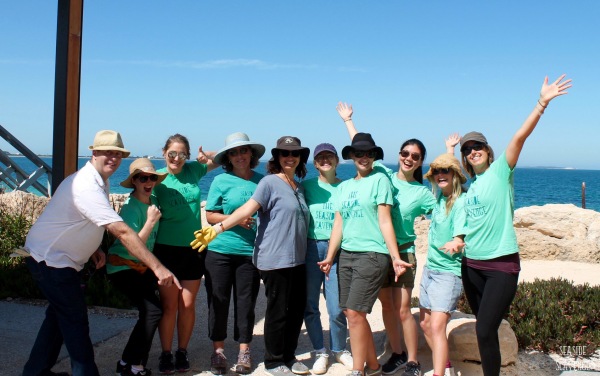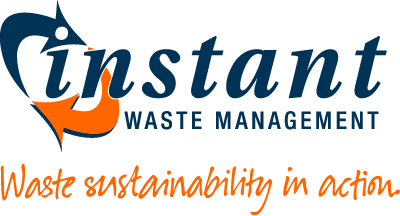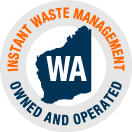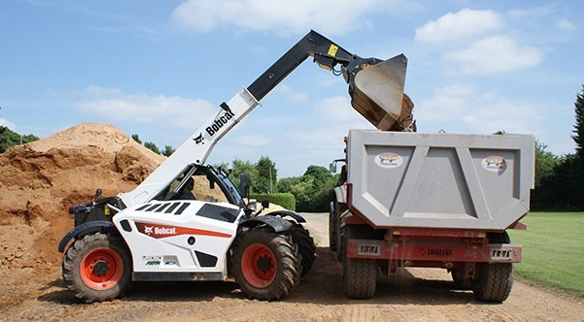Why Wind-Blown Waste Really IS a Problem – And What We Can Do About It
10 December 2018
The average Australian produces 1.5 tonnes of waste per year and with Australia’s population expected to reach 37.6 million by 2050, waste generation is inevitably on the rise. This increase in waste inevitably drives pollution – and, in turn, global warming – and the devastating impact this has on our planet is alarming to say the least.
With the health of the environment – and our own health – under threat, substantial measures to diminish landfill, reduce pollution and cut global warming emissions are more critical than ever.
If we want to become a more sustainable and environmentally-aware community, we all must do our part. Although this begins in the very early stages of production, we need to consider how we can contribute to helping the environment at every stage of a product’s life.
A recent surge in educational initiatives and media coverage around pollution and global warming have made us more environmentally-conscious. Recycling has become a key growth sector and consumers are increasingly questioning the origin of their products, seeking the ‘eco-friendly’ seal of approval.
Experts are also striving for new ways to tackle our waste problem. A series of technologies designed to generate energy from waste, with minimal damage to the environment, are emerging. These are known collectively as Waste to Energy (WtE) and while still in its infancy, the global WtE industry is projected to exceed $43 billion by 2024.
However, more needs to be done and one issue which is often overlooked, is windblown waste.
Consequences of Windblown Waste
Lightweight rubbish can easily be dispersed into the surrounding environment by wind and rain, if not properly secured during storage and transit. Not only does this give rise to visual pollution, but it can also cause injury to animals and even result in death from choking or entanglement.
Furthermore, when litter infiltrates the water systems, it creates a toxic environment. As the contaminated water gets ingested by deer, foxes, fish and an endless list of other animals, the toxins may cause blood clotting, seizures and a series of other health issues. Surrounding plant life can also be killed.
Studies indicate that over one million marine animals (including mammals, fish, sharks and turtles) and birds are killed across the globe each year due to plastic debris in the ocean. There are an estimated 5.25 trillion pieces of plastic debris in the ocean and a single plastic bag has the potential to kill repeatedly, as a dead animal will decompose long before the plastic does, thereby releasing the plastic into the water once again.
And this is no small issue. Plastic waste has contributed to five major plastic accumulation zones in our oceans, the largest of which is the Great Pacific Garbage Patch (GPGP), located between California and Hawaii. With plastic pieces weighing an estimated 80,000 tonnes, the GPGP covers an approximate surface area of 1.6 million square kilometres.
And as humans, we are not immune to the risks associated with plastic. Plastic in the marine food cycle can also permeate the human food chain. Plastics release chemicals which have been linked to cancer and are absorbed into the bodies of the fish – which we eat.
What Can We Do to Reduce Windblown Waste?
Even for those of us most dedicated to recycling and reducing our environmental impact, simple mistakes can cause significant damage. The storage and handling – as well as the disposal – of waste can put the health of our environment at stake, if not properly managed.
You can reduce your windblown waste by following these simple tips:
- Close the lids on all outside rubbish bins.
- When transporting waste, make sure your load is fully covered to prevent lightweight litter from escaping into the environment.
- Dispose of waste at licensed waste disposal facilities.
- Secure stockpiled waste for verge collection or on building sites, by placing the heavier items on top of the lightweight items.
- Bobcats and other loaders can easily drop waste items. If you see litter escaping from such a machine into the wider environment, you can report the operating company to Keep Australia Beautiful, or your local ranger.
- Use waste removalists licensed to collect specific categories of waste for all skip hire and commercial waste management.
- Use an environmentally-responsible provider, like Instant Waste Management
- Do not illegally dump your waste. Not only will you be breaking the law, but illegal dumping comes at a cost – not only to the environment, but also to you, as you can get fined! Also, when people dump rubbish in builders’ skip bins, the cost to the builder gets factored into the cost of a build. So if you’re building a home, this cost will be passed on to you!
- And remember the 3 Rs – Reduce, Recycle and Repurpose where you can!
How Are IWM Supporting the Cause?
As market leaders in integrated waste management and recycling, our core focus is landfill reduction. At Instant Waste Management (IWM) we take our social and environmental responsibility very seriously and follow strict processes to help reduce landfill and prevent windblown waste:
- Our trucks are all solid-sided and all loads are covered in transit, to prevent litter from escaping.
- Highly experienced in handling mixed materials (including recycling materials), we arrange our loads to ensure lightweight materials are secured by heavier items.
- Our staff are fully-trained in site cleanliness, appropriate waste management procedures and concepts of waste reduction and recycling.
- Our drivers are held accountable for the implementation of good site waste management practices.
- We also educate our clients on effective site waste management practices.
- Targeting 80% – 90% general waste to landfill diversion, our customers have won a number of ‘green’ awards for our achievements & we have been acknowledged for winning a Keep Australia Beautiful “Star Award” for our work on the Dob in a Dumper committee as Chair.
- Strong advocates for environmental health, we are dedicated to ongoing educational initiatives and supporting charitable events and sponsorships, such as Keeping Australia Beautiful and, most recently, Seaside Scavenge WA.
What is Seaside Scavenge?
 Seaside Scavenge is a fantastic initiative which “inspire[s] communities to scavenge, catalogue and dispose of litter appropriately.” With live tunes to soak up, it provides a fun, encouraging way for people to get on board with the clean-up of our beautiful coastline.
Seaside Scavenge is a fantastic initiative which “inspire[s] communities to scavenge, catalogue and dispose of litter appropriately.” With live tunes to soak up, it provides a fun, encouraging way for people to get on board with the clean-up of our beautiful coastline.
Dubbed ‘Trash, Tunes & Treasure,’ the event incentivises participants to scavenge by rewarding them with a Trash Token for every 10 pieces of litter retrieved. This Trash Token can then be exchanged for drinks, funky pre-loved clothes, books and more in their pop-up market.
In little over three years, the Seaside Scavengers have picked up a whopping 7,998kgs of litter from our waterways and prevented 132,683 butts from washing into our ocean.
By 2020, Seaside Scavenge aims to have:
- Removed 10-tonnes of litter from the environment
- Engaged 5,000 litter-picking participants
- Established a Seaside Scavenge chapter in every state of Australia
- Hosted one international event
IWM’s State Resource Development Manager, Jake Hickey, volunteered at three of the four WA events held in 2018, with litter-picking, setting up the event stalls and volunteering as a waste auditor.
How You Can Get Involved
To get on board with this brilliant project, check out the upcoming scavenges, or subscribe to the Seaside Scavenge newsletter. Did you know that $20 will remove an average of 276KG of CO2 emissions? If you would like to donate, you can do so here.
If you’re looking for an environmentally-responsible waste management company, or skip provider, contact the friendly team at IWM today.










